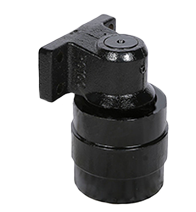1.EARTHMOVING
Many people know excavators for their usefulness in earthmoving. Their signature bucket attachments have teeth-like edges that enable the machine to dig and scoop earth. The earthmoving applications for excavators include:
Trench digging: Trenches have multiple uses in construction, utilities and many other industries. Operators dig trenches with excavators to set foundations, install wires and pipes or create an area to plant seeds. Excavators can dig trenches that would take significant time and effort with manual equipment.
Landscape grading: During the landscape grading process, an excavator operator levels or sculpts the ground to prepare an area for a project. In construction, grading creates a level ground for a building or another piece of architecture. Grading in landscaping can involve controlling water flow from an area or creating a space for plants, paths and other elements.
2. MATERIAL HANDLING
When an operator attaches a clamp attachment to an excavator, it becomes a powerful tool in material handling. The excavator picks up materials that would not fit in a bucket attachment. Some excavators have elevated cabs and heavy counterweights for better visibility and stability during material handling.
3. DEMOLITION
Using a breaker attachment, an excavator can perform various demolition tasks. Breakers provide hundreds of pounds of impact energy to break into concrete, stone and other tough materials. Excavators geared toward demolition offer stability and safety features for a safer job site.
4. UNDERGROUND EXCAVATION
Also known as tunneling, underground excavation involves creating underground passageways through digging. Operators can use a combination of bucket and auger attachments to get the best results. Augers bore deep into the ground using hydraulic circuits. Compact models tend to suit these operations due to the limited space underground.
5. AMPHIBIOUS AND UNDERWATER OPERATIONS
Some types of excavators can operate in water. Features such as long attachment arms and roller chains make it easier to navigate an excavator in these environments.
6. FORESTRY
In forestry, operators use excavators to create access routes, move branches, cut and shear. Excavator attachments include shears, mulchers and many other options for managing trees and greenery.
7. DEBRIS REMOVAL
Attachments such as buckets and clamps enable excavators to pick up debris in removal applications. Different excavator types and sizes allow you to choose the right combination of power and maneuverability for debris removal jobs.
Tags :

Sign up to our newsletter for the construction machinery